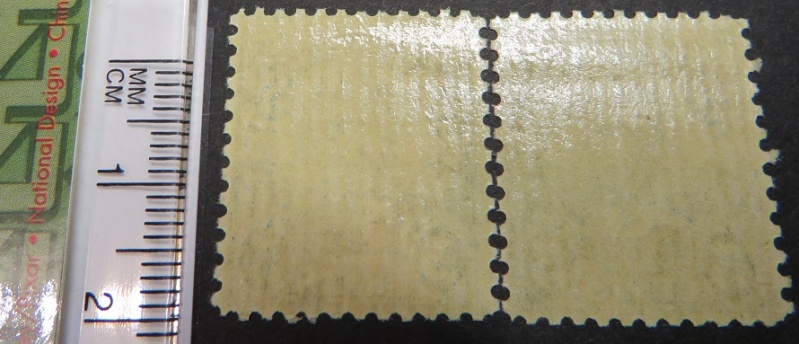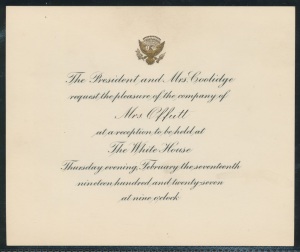 One of the most interesting and specialized areas of philately is the Italian area. Italian philately comprises several main areas of interest—Italian States, Italy proper, Italian Offices and Colonies, and philatelic areas traditionally allied with Italy, such as San Marino and the Vatican. There are tens of thousands of Italian area stamps to collect, and specialists count over 150,000 varieties of Italian area stamps.Rarities exist, but the vast majority of Italian area stamps are affordable and fun to collect. There is no other area of our hobby that offers so much breadth and depth at such an affordable price.
One of the most interesting and specialized areas of philately is the Italian area. Italian philately comprises several main areas of interest—Italian States, Italy proper, Italian Offices and Colonies, and philatelic areas traditionally allied with Italy, such as San Marino and the Vatican. There are tens of thousands of Italian area stamps to collect, and specialists count over 150,000 varieties of Italian area stamps.Rarities exist, but the vast majority of Italian area stamps are affordable and fun to collect. There is no other area of our hobby that offers so much breadth and depth at such an affordable price.Monthly Archives: March 2017
- Posted March 31, 2017Read more »
 One of the most interesting and specialized areas of philately is the Italian area. Italian philately comprises several main areas of interest—Italian States, Italy proper, Italian Offices and Colonies, and philatelic areas traditionally allied with Italy, such as San Marino and the Vatican. There are tens of thousands of Italian area stamps to collect, and specialists count over 150,000 varieties of Italian area stamps.Rarities exist, but the vast majority of Italian area stamps are affordable and fun to collect. There is no other area of our hobby that offers so much breadth and depth at such an affordable price.
One of the most interesting and specialized areas of philately is the Italian area. Italian philately comprises several main areas of interest—Italian States, Italy proper, Italian Offices and Colonies, and philatelic areas traditionally allied with Italy, such as San Marino and the Vatican. There are tens of thousands of Italian area stamps to collect, and specialists count over 150,000 varieties of Italian area stamps.Rarities exist, but the vast majority of Italian area stamps are affordable and fun to collect. There is no other area of our hobby that offers so much breadth and depth at such an affordable price. - Posted March 30, 2017Read more »Gum has had a long relationship with printing on postage stamps. In the pre-1930 days, flat press printing meant that sheets of paper were fed into the press one by one and then the printed sheets were hung up to dry, gummed, and weighted at the corners so that as the gum contracted the stamp sheets they did not curl. With the faster and more efficient printing method of rotary press, stamps were printed on rolls of paper. Hand gumming was impossible as was weighting each sheet to prevent shrinkage. The solution was to apply the gum to the sheet with ridges, sort of like expansion lines on freshly poured concrete sidewalks, which allowed a small amount of contraction of the paper from the drying gum without curling.
- Posted March 28, 2017Read more »
 The Scott catalog prices for most countries after 1940 is for stamps in mint Never Hinged condition. This is for three reasons. First, most post-1940 stamps are more common in NH than in hinged condition (especially as you come closer to the current period in time). Second, most collectors have been trained to believe that they want NH stamps. And third, the foreign catalogs from which Scott steals its prices only list their stamps in NH condition. So the question often arises about how one should value foreign hinged stamps in the modern period. As auctioneers, our experience has given us the following answers to this question. The effect of hinging on mint modern stamps is more significant the further you go back to the 1940 cutoff that the Scott catalog uses.
The Scott catalog prices for most countries after 1940 is for stamps in mint Never Hinged condition. This is for three reasons. First, most post-1940 stamps are more common in NH than in hinged condition (especially as you come closer to the current period in time). Second, most collectors have been trained to believe that they want NH stamps. And third, the foreign catalogs from which Scott steals its prices only list their stamps in NH condition. So the question often arises about how one should value foreign hinged stamps in the modern period. As auctioneers, our experience has given us the following answers to this question. The effect of hinging on mint modern stamps is more significant the further you go back to the 1940 cutoff that the Scott catalog uses. - Posted March 27, 2017Read more »Prices and the value of money are difficult to evaluate over time. Readers of Victorian novels know that in the late Nineteenth Century an income of about 150 Pounds a year was the minimum needed to live as a gentleman (Trollope says tartly "an embarrassed gentleman, yes, but a gentleman"). That was three Pounds a week, and for that a person could rent an apartment, eat, and have a part time servant. Before 1900, prices for food and clothing were proportionately much more expensive, and labor was proportionately far cheaper. Sir Walter Scott writes that in his time one could engage a servant for little more than food, clothing, and shelter.

- Posted March 24, 2017Read more »The reason you should buy your stamps from Apfelbaum is not our prices (which are very attractive) or our service and shipping (which is not only free, but is also the fastest). You should buy your stamps from Apfelbaum because we are the only stamp company that assures your complete satisfaction and safety to this degree: buy any stamp or lot, and you may return it for any reason within thirty days for a full refund. Further, we guarantee every stamp we sell as being genuine and as described without time limit. This means if you buy a stamp from us, and it ever turns out not to be genuine or if it has an undescribed fault, we will take it back for a full refund at any time in the future, even years later.We ship virtually every order
- Posted March 22, 2017Read more »
 The Scott catalog prices for most countries after 1940 is for stamps in mint Never Hinged condition. This is for three reasons. First, most post-1940 stamps are more common in NH than in hinged condition (especially as you come closer to the current period in time). Second, most collectors have been trained to believe that they want NH stamps. And third, the foreign catalogs from which Scott steals its prices only list their stamps in NH condition. So the question often arises about how one should value foreign hinged stamps in the modern period.
The Scott catalog prices for most countries after 1940 is for stamps in mint Never Hinged condition. This is for three reasons. First, most post-1940 stamps are more common in NH than in hinged condition (especially as you come closer to the current period in time). Second, most collectors have been trained to believe that they want NH stamps. And third, the foreign catalogs from which Scott steals its prices only list their stamps in NH condition. So the question often arises about how one should value foreign hinged stamps in the modern period.
As auctioneers, our experience has given us the following answers to this question: The effect of hinging on mint modern stamps is more significant the further you go back to the 1940 cutoff that the Scott catalog uses. Stamps from most European and British area countries in the 1940-60 period sell, in hinged condition, for - Posted March 21, 2017Read more »
 There are three main Foreign catalogs for the non English speaking European specialties-Michel for Germany and German Area, Yvert for France and French Colonies and Sassone for Italy and the Italian Area. Michel is the Mercedes of catalogs with hundreds of thousands of specialized listings in all phases of German philately with covers, blocks, paper types and cancellations all addressed and priced. Michel Deutchland Specialized is the prototype of what a specialty catalog should be and no other country's specialized catalog comes even close. Yvert's France and Colonies catalog is good, handles well though without much excitement or acceleration-sort of like a Peugeot. Yvert's listing often go little beyond Scott (especially the wonderful Scott Specialized) but still overall is a capable model. Sassone, the Italian catalog is sort of like a hybrid Maserati/Fiat. Some sections are excellent (modern printing varieties for instance) and it has thousands of listings that are beyond
There are three main Foreign catalogs for the non English speaking European specialties-Michel for Germany and German Area, Yvert for France and French Colonies and Sassone for Italy and the Italian Area. Michel is the Mercedes of catalogs with hundreds of thousands of specialized listings in all phases of German philately with covers, blocks, paper types and cancellations all addressed and priced. Michel Deutchland Specialized is the prototype of what a specialty catalog should be and no other country's specialized catalog comes even close. Yvert's France and Colonies catalog is good, handles well though without much excitement or acceleration-sort of like a Peugeot. Yvert's listing often go little beyond Scott (especially the wonderful Scott Specialized) but still overall is a capable model. Sassone, the Italian catalog is sort of like a hybrid Maserati/Fiat. Some sections are excellent (modern printing varieties for instance) and it has thousands of listings that are beyond - Posted March 20, 2017Read more »
 The Penny Black is not only the first stamp but one of the more fun stamps to specialize in. The stamp was printed in twelve plates, and each plate had 240 subjects. As a security measure, each stamp received check letters in the corners so that each of the 240 subjects of each plate are unique (the check letters made counterfeiting more difficult as forgers would have to reproduce more than one specific lettered stamp or the overabundance of the same check letter would lead to suspicion. Further, the check letters eliminated the concern that partially cancelled stamps would be soaked off, cut, and reassembled on letters). With twelve plates and 240 stamps per plate, a specialist has 2,880 different Penny Blacks that are needed to have a complete run of plates and check letters. Further, specialists can collect by cancellation and date, blocks, pairs, and multiples. Most collectors keep it simple and are happy to have one. We just bought a few Very Fine
The Penny Black is not only the first stamp but one of the more fun stamps to specialize in. The stamp was printed in twelve plates, and each plate had 240 subjects. As a security measure, each stamp received check letters in the corners so that each of the 240 subjects of each plate are unique (the check letters made counterfeiting more difficult as forgers would have to reproduce more than one specific lettered stamp or the overabundance of the same check letter would lead to suspicion. Further, the check letters eliminated the concern that partially cancelled stamps would be soaked off, cut, and reassembled on letters). With twelve plates and 240 stamps per plate, a specialist has 2,880 different Penny Blacks that are needed to have a complete run of plates and check letters. Further, specialists can collect by cancellation and date, blocks, pairs, and multiples. Most collectors keep it simple and are happy to have one. We just bought a few Very Fine - Posted March 17, 2017Read more »
Postal stationary has always languished in popularity. In the earliest years of our hobby most albums had spaces for Cut Squares (the stamp portion of a mint entire envelope cut away from the envelope and collected on its own). But with the exception of US and German Area philately there are few postal stationery collectors anymore. This is largely because there are more than enough stamps to collect and collectors typically like material that is easy to find and readily salable. As the number of the world's unique major Scott listed stamps has approached one million, the feeling of most collectors is that they don't need to go far from traditional stamps in order to find lots of material to collect.
Another factor that negatively impacts the popularity of US postal stationary is how very difficult the catalog listings are and how trivial are the differences that make for major numbers. As a rule - Posted March 16, 2017Read more »
A question that Americans are going to have to answer in the next few years is whether we want to keep our post offices open and have them continue their daily trips serving us all with mail. We have reluctantly made this decision with Amtrak. Rail travel is not a money maker but we have decided that the benefits of allowing people to go from city to city and not use their cars is a good that accrues to society that we are all willing to pay for. This is what a government does-collect revenue from us all in a way that the majority deems fair and parcels it out in ways that society deems fair. Social Security and Medicare are programs similar to Amtrak and mail delivery (with the added benefit of having a larger constituency).
Several European countries, such as Holland, have made their decision and have largely privatized mail delivery. But Holland is an overwhelming - Posted March 14, 2017Read more »
Stamp collecting has always been an International hobby, and there is no better example of this than the issue of measuring perforations. Europeans and Americans differ on how they take temperature (Celsius versus Fahrenheit) and distance (miles versus kilometers). But collectors all around the world use the same types of perforation gauges and count perfs the same way. When we call something perf 12 all collectors mean 12 perforation holes per two centimeters. This early agreement on perfs came without any effort. The French and the Belgians were the world's philatelic leaders in the mid-Nineteenth Century. They produced the first albums and catalogs, and so it was to them that later catalog makers from other countries turned when it came time to list differing perforation varieties. For the most part, the early Scott catalog copied the differing national sections of the foreign catalogs, using a pirated version of Yvert for France and Michel for Germany. So it was natural to pick up the
- Posted March 13, 2017Read more »
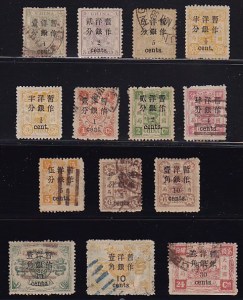 The stamps of China need no promotion. Over the last twenty years the increases in prices and popularity has been astounding. Prices have risen geometrically and the number of China collectors both here and around the world has grown dramatically as well. I recently worked on a wonderful China consignment and it rekindled my interest. China is not just a philatelic area with lots of high priced stamps because there are so many new Chinese collectors. It is a fascinating and complex philatelic area that offers all the best that philately has to offer.
The stamps of China need no promotion. Over the last twenty years the increases in prices and popularity has been astounding. Prices have risen geometrically and the number of China collectors both here and around the world has grown dramatically as well. I recently worked on a wonderful China consignment and it rekindled my interest. China is not just a philatelic area with lots of high priced stamps because there are so many new Chinese collectors. It is a fascinating and complex philatelic area that offers all the best that philately has to offer.
For collectors who like to keep things simple there are the stamps of the Republic of China (Taiwan) and the People's Republic of China (Mainland China). Between these two issuing entities there are thousands of stamps, all of them colorful and well designed and replete with Chinese culture and history. They range in price from - Posted March 09, 2017Read more »There are several factors to take into account when evaluating the challenge of collecting any given country. First, how difficult is the country to complete using the major catalog for that country? Second, how pricey is the material from that country? How much will it cost to complete (or at least make a strong representative collection)? Third, price aside, how available are the more unusual and scarce items from the country? And fourth, how much philatelic knowledge is needed to collect and appreciate the stamps of the country?
- Posted March 07, 2017Read more »
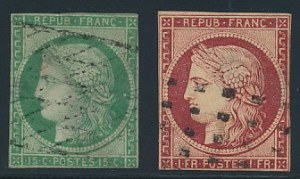 The first stamp issued in the world portrayed the ruling monarch of the issuing country (Great Britain Penny black). After that it became protocol to use the portrait of the ruler of a country on postage stamps or in the case of the United Sates to use a deceased president or statesman. Some countries without a strong national ruler might use a national symbol as in the case of the first issues of Canada which show a beaver. Many European countries, such as Russia and many of the German States showed the Coat of Arms of the ruling family. But France began what what was to be a tradition on most of her nineteenth century stamps by using a allegorical image, which on the first stamps was the goddess Ceres, the deity of agriculture who also represented prosperity. France political life was troubled throughout the nineteenth century with Kings being replaced by Emperors which were superseded by Republican forms of government before going back to monarchy. Perhaps this is why for her first stamp
The first stamp issued in the world portrayed the ruling monarch of the issuing country (Great Britain Penny black). After that it became protocol to use the portrait of the ruler of a country on postage stamps or in the case of the United Sates to use a deceased president or statesman. Some countries without a strong national ruler might use a national symbol as in the case of the first issues of Canada which show a beaver. Many European countries, such as Russia and many of the German States showed the Coat of Arms of the ruling family. But France began what what was to be a tradition on most of her nineteenth century stamps by using a allegorical image, which on the first stamps was the goddess Ceres, the deity of agriculture who also represented prosperity. France political life was troubled throughout the nineteenth century with Kings being replaced by Emperors which were superseded by Republican forms of government before going back to monarchy. Perhaps this is why for her first stamp - Posted March 06, 2017Read more »
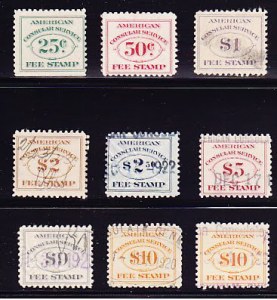 The revenue stamps of the United States offer numerous sub-specialties for collectors: There are the stock and document transfer tax stamps, the vice tax stamps, and the special services tax stamps. Among the most interesting of this last group are the Consular tax stamps. Scott lists 40 main varieties that were issued from 1906-1952. These stamps were issued to various US consular offices abroad and paid for such things as visas. They often have cancellations from the foreign offices from which they were used. The stamps are all quite scarce, and a collection by cancellation type would offer tremendous philatelic interest for not much money (the reason the cost would be low is that the stamps are so scarce that, after acquiring the basic stamps, it would be unusual to find something that you needed). As luck would have it, we are offering a complete collection of these stamps in our next Public Auction. It gets posted today.
The revenue stamps of the United States offer numerous sub-specialties for collectors: There are the stock and document transfer tax stamps, the vice tax stamps, and the special services tax stamps. Among the most interesting of this last group are the Consular tax stamps. Scott lists 40 main varieties that were issued from 1906-1952. These stamps were issued to various US consular offices abroad and paid for such things as visas. They often have cancellations from the foreign offices from which they were used. The stamps are all quite scarce, and a collection by cancellation type would offer tremendous philatelic interest for not much money (the reason the cost would be low is that the stamps are so scarce that, after acquiring the basic stamps, it would be unusual to find something that you needed). As luck would have it, we are offering a complete collection of these stamps in our next Public Auction. It gets posted today. - Posted March 03, 2017Read more »George Sloane, whose book I have been rereading this week, makes a point in a 1956 article that I have long wondered about. Why is it, he asks, that such a high percentage of Airmail invert stamps (#C3a) are damaged? Look in any auction catalog. Chances are two out of three that the Invert listed for sale will be listed with some kind of fault from crease to thin to even small tears. And regumming is common too. This was a stamp that was a rarity from its discovery in 1918. It was sold directly to dealers and collectors who knew from the start its rarity status. So why couldn't these stamps' owners take better care of them over the years?

- Posted March 03, 2017Read more »
 Grace and Calvin Coolidge were considered generous and gracious people. But little did they realize that the invitations that they sent out in 1927 had more than just the significance of being able to have cocktails with the President. On the White House stationary that was used for this invitation the President used a rare type II,Scott #634A which was a stamp variety that was not known immediately when it was issued and was no doubt used by accident on this invitation. A collector would have known instantly that he had gotten a real bonus with his invitation, but the recipient saved this because it was from the President not because she was a collector. It is interesting to note that this was probably an invitation to a political fund raiser as the President has the Free Frank for all official business and then, as now, only used stamps in sending mail for political functions. A political giver invited to the White House had to be a heavy hitter and
Grace and Calvin Coolidge were considered generous and gracious people. But little did they realize that the invitations that they sent out in 1927 had more than just the significance of being able to have cocktails with the President. On the White House stationary that was used for this invitation the President used a rare type II,Scott #634A which was a stamp variety that was not known immediately when it was issued and was no doubt used by accident on this invitation. A collector would have known instantly that he had gotten a real bonus with his invitation, but the recipient saved this because it was from the President not because she was a collector. It is interesting to note that this was probably an invitation to a political fund raiser as the President has the Free Frank for all official business and then, as now, only used stamps in sending mail for political functions. A political giver invited to the White House had to be a heavy hitter and

